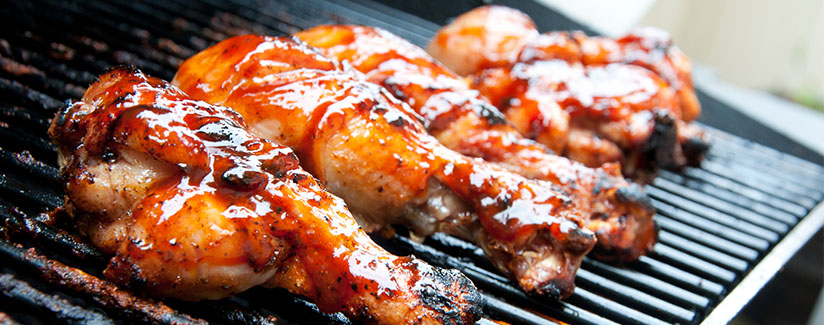
Are There Antibiotics in Chicken Meat? Part 1
Do you buy meat that is labeled “raised without antibiotics”? Is antibiotic resistance a growing problem when it comes to poultry meat? Should we be worried about antibiotics being fed to chickens?
To understand antibiotic use in chickens a bit more, we reached out to Charles L. Hofacre, DVM, MAM, PhD, Professor and Director of Clinical Services, Poultry Diagnostic and Research Center, College of Veterinary Medicine at the University of Georgia; and Ken Macklin, PhD, Associate Professor and Extension Specialist Poultry Health, Environmental Issues and Biosecurity, Department of Poultry Science, Auburn University.
Why are antibiotics used in feed?
Dr. Charles L. Hofacre:
There are three primary uses for antibiotics in feed for food animals.
- To treat a disease. Chickens can be treated with antibiotics in the feed or water.
- Disease prevention.
- If there’s a two-house chicken farm, and one house is sick, we might put both houses on antibiotic knowing that the disease may transfer from one house to the next.
- There are certain times in a chicken’s life where they’re going to be exposed to disease organisms that aren’t susceptible to antibiotics, but they could cause secondary diseases where they are susceptible to antibiotics, so in those instances, they may be routinely treated with an antibiotic in the feed because we know that during a specific period of time they are going to be susceptible to disease.
- Growth promotant. Chickens that are healthier grow better because the antibiotics are preventing intestinal disease.
Dr. Ken Macklin:
Antibiotics are used to treat sick flocks. Most of the time, antibiotics are used in chicken feed to control a parasite. Other times, antibiotics are used at the therapeutic level (treating a specific illness with a more powerful antibiotic) on one specific farm. Maintaining gut health is important – if the chickens are healthy, they are going to grow better, but really, the farmers and companies are just trying to help the chickens be healthier. From an animal welfare standpoint, if the chickens are sick, they need medicine. The chickens are given antibiotics because of an ailment – either trying to prevent it or treat it.
Is feeding antibiotics to chickens considered a risk to human health?
Dr. Hofacre:
If we knew the answer to this question, we wouldn’t have this ongoing discussion about antibiotics today. The Europeans took the most drastic measure – they eliminated one class of antibiotics in feed altogether, around the year 2000. We’ve had almost 15 years to study that big experiment, which has shown that antibiotic resistance in humans hasn’t really changed any. And the health issues seen in farm animals in Europe has actually worsened. Farmers in Europe actually use more therapeutic use (treating a specific illness with a more powerful antibiotic, ones that are also important to human medicine) of the antibiotics than we do in the United States.
Dr. Macklin:
There is risk if proper procedures are not followed, which rarely happens. As with anything, there is some risk, but I believe that the industry and governmental oversight tries the best to prevent it.
In chickens, what diseases are the antibiotics used for?
Dr. Hofacre:
The intestinal disease that antibiotics are used for, primarily, is a bacteria called clostridium perfringens. And the insulting agent (what it is caused by) is a parasite called Coccidia. Coccidia is found in every chicken house everywhere in the world. Even if the houses are clean and disinfected (and it doesn’t matter whether the chicken house has concrete floors or dirt floors), chickens are always going to be exposed to Coccidia that cause damage to the intestines, and give a bacteria called clostridium the opportunity to cause disease.
Dr. Macklin:
There is a disease called Coccidiosis, and antibiotics are used to keep Coccidiosis under control for animal health reasons. Coccidiosis is a parasitic disease in the intestine and the antibiotics to treat this parasite are only used in production animals. Humans cannot catch this parasite and, unfortunately, it is impossible to eliminate this parasite in chickens. There have been studies where they’ve built brand new poultry houses, and after the second flock occupies the house, the parasite can already be found in the chickens. Just to reiterate, antibiotics are fed to chickens to control Coccidiosis and clostridium diseases in order to ensure that they are being raised in ways that make them happier and healthier.
The term antibiotic growth promotant is a misnomer. Antibiotics don’t help them directly grow bigger and they are not hormones. They treat intestinal ailments. With more than 20,000 chickens in each chicken house, there is a high likelihood that they may get an intestinal ailment, such as Coccidiosis. The approach is similar to giving your dog a bordetella shot before it is boarded at a kennel, so all the dogs don’t get sick. They give these antibiotics so there won’t be any spread of disease and, therefore, they grow better. They’re helping the birds reach their potential by controlling the diseases.
Are chickens chronically sick?
Dr. Hofacre:
No, I wouldn’t say that. Coccidia have been studied since the early 1900’s. We know a lot about Coccidia in chickens – there is a fairly well-defined time when we know that those Coccidia are going to cause some damage to the intestines that will make the chickens more susceptible to bacterial disease.
Dr. Macklin:
I wouldn’t say that they’re chronically sick. We feed chickens on a large scale and oftentimes treat them on a large scale.
Looking for more information?
Are There Antibiotics in Chicken Meat? Part II: Antibiotics Classifications and Safety
Are There Antibiotics in Chicken Meat? Part III: Antibiotics Regulation
“Grilling (8/365)” by John Liu is licensed under CC BY 2.0.



























